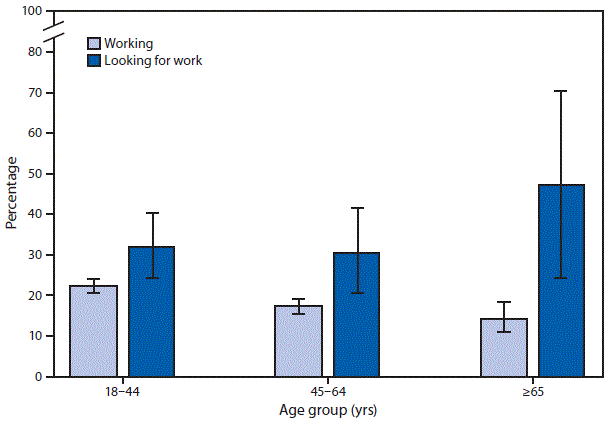
MMWR Surveillance Summaries (No. 4)
PDF of Surveillance Summaries issue
- Assisted Reproductive Technology Surveillance — United States, 2016
Saswati Sunderam, PhD; Dmitry M. Kissin, MD; Yujia Zhang, PhD; et al.
MMWR Weekly (No. 16)
PDF of the weekly issue
- Consumption of Alcohol Beverages and Binge Drinking Among Pregnant Women Aged 18–44 Years — United States, 2015–2017
Clark H. Denny, PhD; Cristian S. Acero, MPH; Timothy S. Naimi, MD; et al.
Drinking alcohol while pregnant can cause miscarriage, stillbirth, and fetal alcohol spectrum disorders. - Preliminary Incidence and Trends of Infections with Pathogens Transmitted Commonly Through Food — Foodborne Diseases Active Surveillance Network, 10 U.S. Sites, 2015–2018
Danielle M. Tack, DVM; Ellyn P. Marder, MPH; Patricia M. Griffin, MD; et al. - Hepatitis C Virus Potentially Transmitted by Opioid Drug Diversion from a Nurse — Washington, August 2017–March 2018
Henry N. Njuguna, MD; Denise Stinson, MN; Patricia Montgomery, MPH; et al. - Erratum: Vol. 67, No. 33
- QuickStats: Percentage of Adults Aged ≥18 Years Who Felt Worried, Nervous, or Anxious Daily or Weekly, by Age Group and Employment Status — National Health Interview Survey, United States, 2017
QuickStats: Percentage* of Adults Aged ≥18 Years Who Felt Worried, Nervous, or Anxious Daily or Weekly,† by Age Group and Employment Status§ — National Health Interview Survey,¶United States, 2017
Weekly / April 26, 2019 / 68(16);378

* With 95% confidence intervals shown by error bars.
† Based on a response of “daily” or “weekly” to the following question: “How often do you feel worried, nervous or anxious? Would you say daily, weekly, monthly, a few times a year, or never?”
§ Employment status in the week before the interview included 1) working for pay at a job or business; or with a job or business, but not at work; or working, but not for pay, at a family-owned job or business and 2) looking for work.
¶ Estimates are based on household interviews of a representative sample of the adult, noninstitutionalized U.S. civilian population and are derived from the National Health Interview Survey Adult Functioning and Disability Supplement.
In 2017, compared with adults currently working, the percentage of adults who reported feeling worried, nervous, or anxious daily or weekly was higher among those looking for work in all three age groups: 18–44 years (22.4% versus 32.1%), 45–64 years (17.3% versus 30.4%), and ≥65 years (14.3% versus 47.2%). The percentage of currently working adults who reported feeling worried, nervous, or anxious declined with age.
Source: National Health Interview Survey, 2017. https://www.cdc.gov/nchs/nhis.htm.
Reported by: Toni Alterman, PhD, talterman@cdc.gov, 513-841-4210; Jia Li, MS; Sara E. Luckhaupt, MD; Roger Rosa, PhD.






















.jpg)












No hay comentarios:
Publicar un comentario